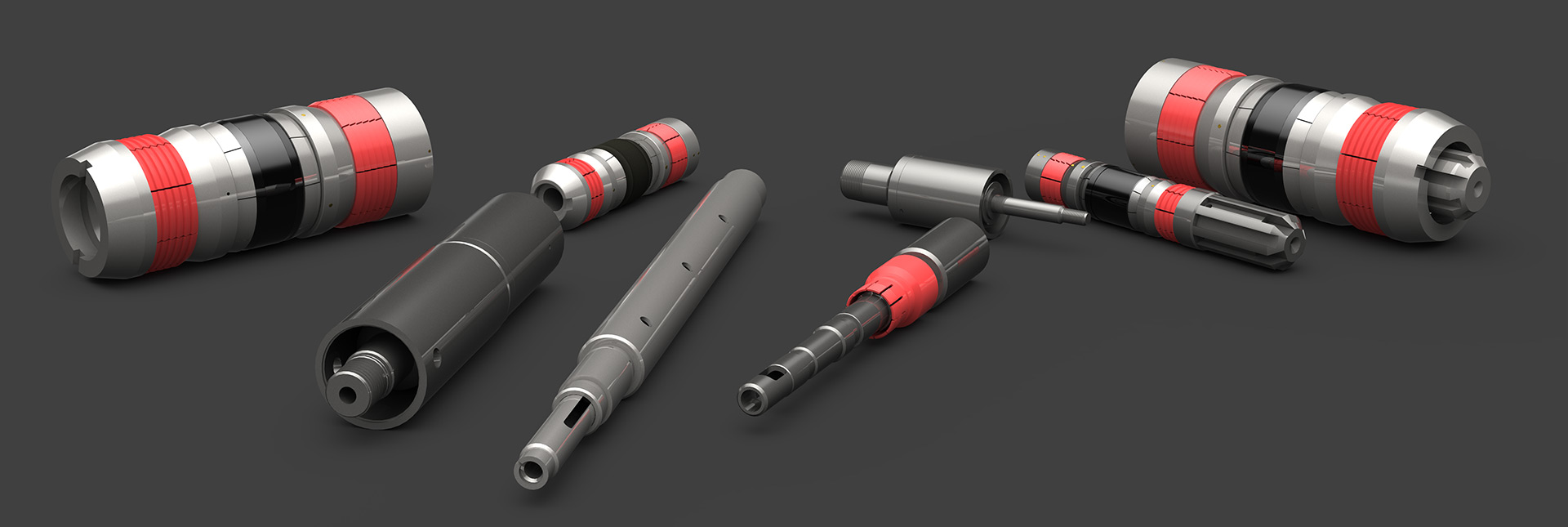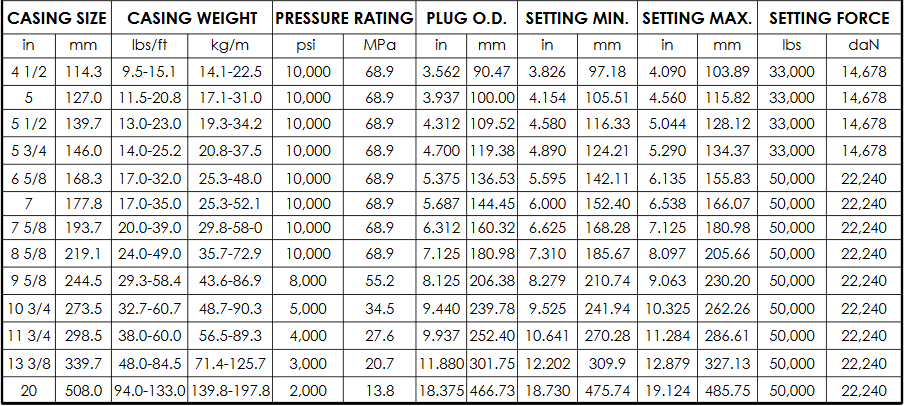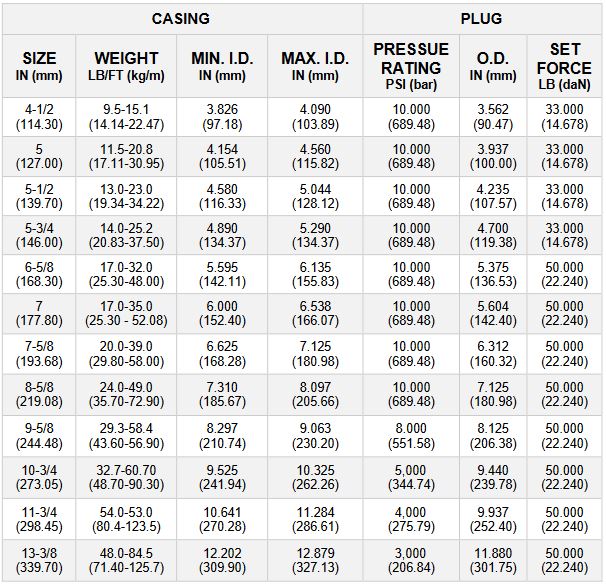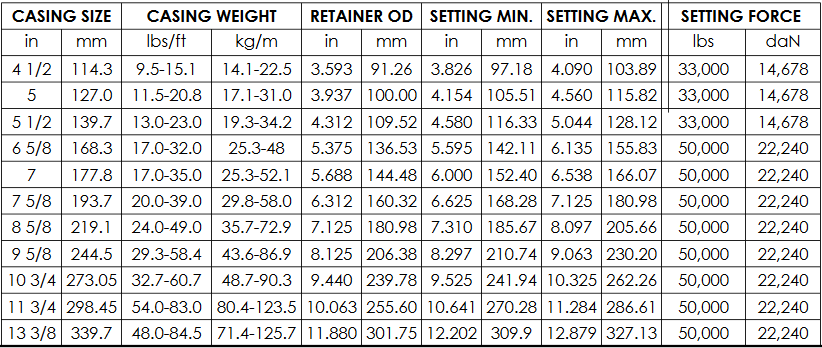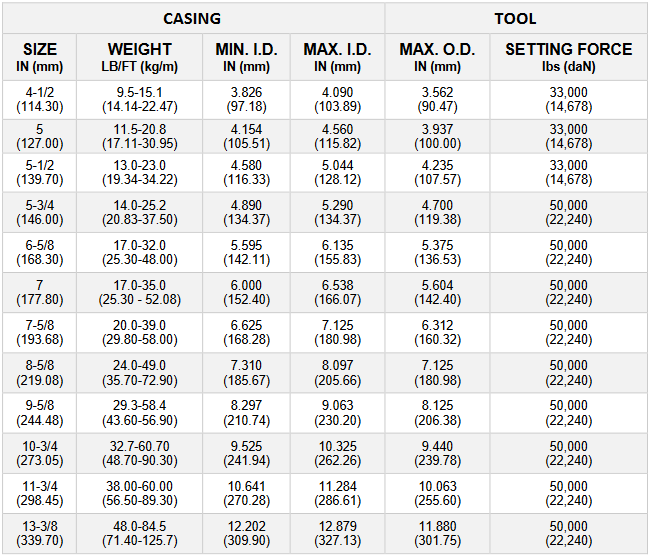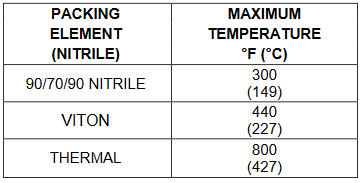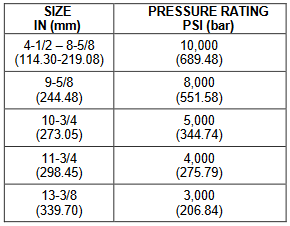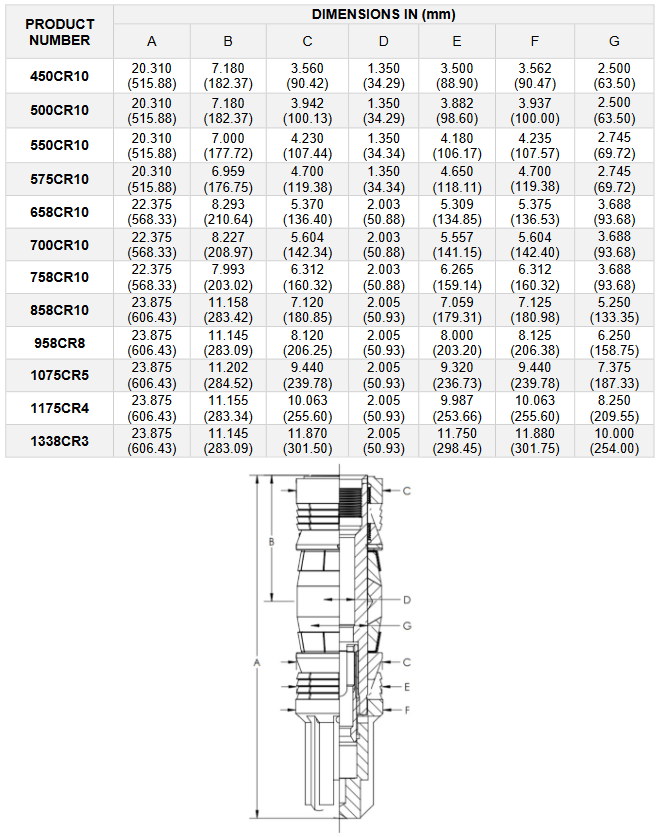Kappa Bridge Plug
GO BACK4-1/2" Through 20"
Canadian Downhole Inc.premium cast iron bridge plugs are designed to run on electric line(e-line).The Kappa bridge plug rated 2,000-psi to 10,000-psi differential (see specification guide) and 300°F,from above and below.
features
benefits
applications

- Install setting sleeve (1) on pressure setting tool.
- Install shear stud in (3) bridge plug.
- Install lock spring (2) on upper thread of shear stud (3). The lock spring (2) must be used to prevent the bridge plug from backing off of pressure setting assembly during run-in.
- Install bridge plugon pressure setting tool at shear stud (3). Thread the Bridge Plug to close gap between cap and setting sleeve. Ensure that there is a 1/8” -3/8” of clearance between setting sleeve (1) and cap.(CAUTION: DO NOT WRENCH. THIS OPERATION SHOULD BE DONE BY HAND.)
- Proceed by running to setting depth and setting as per wire line operating procedures.
- When pressure setting tool is removed from the well.remove setting sleeve for reuse.

- Install adjuster sub (3) on pressure setting tool. Install set screw (2) In adjuster sub.
- Install setting sleeve (1) on pressure setting tool.
- Install lock spring (5) on upper thread of shear stud (4). The lock spring (5)must be used to prevent the bridge plug from backing off of pressure setting assembly during run-in.
- Install shear stud (4) in bridge plug.
- Install bridge plug on pressure setting tool at shear stud (4). Thread the Bridge Plug to close gap between cap and setting sleeve (1). Ensure that there is a 1/8” -3/8” of clearance between setting sleeve (1) and cap. (CAUTION: DO NOT WRENCH.THIS OPERATION SHOULD BE DONE BY HAND.)
- Proceed by running to setting depth and setting as per wire line operating procedures.
- When pressure setting tool is removed from the well.remove setting sleeve (1) and adjuster sub (3) for reuse.

- Install adjuster sub (3) on pressure setting tool
- .Install set screw (2) in adjuster sub (3).
- Install setting sleeve (1) on pressure setting tool
- .Install lock spring (4) on upper thread of shear stud (5). The lock spring (4) must be used to prevent the bridge plug from backing off of the pressure setting assembly during run-in.
- Install shear stud (5) in the Bridge Plug.
- Install bridge plug on pressure setting tool at shear stud (5). Thread theBridge Plug to close the gap between the cap and setting sleeve (1). Ensure that there is a 1/8” -3/8” of clearance between the setting sleeve(1) andthe cap. (CAUTION: DO NOT WRENCH. THIS OPERATION SHOULD BE DONE BY HAND.)
- Proceed by running to setting depth and setting as per wire line operating procedures.
- When pressure setting tool is removed from the well, remove setting sleeve (1) and adjuster sub (3) for reuse.

